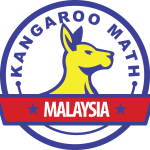Have you ever heard the story of William Tell, the marksman who had to shoot an apple off his son’s head to save his life?
Let’s imagine two story variations to understand the difference between accuracy and precision.
The Two Variations of William Tell's Story
In the first variation, William’s crossbow is stolen, and he has to borrow an inferior one.
He finds that his practice shots cluster in a tight spread beneath the bullseye.
William corrects for it before the challenge, but his aim needs to be more accurate.

In the second variation, William doubts his skills, and his hand develops a tremor.
His practice shots cluster around the apple but in a random pattern. Occasionally, he hits the apple, but with the wobble, there is no guarantee of a bullseye.
William must settle his nervous hand and restore the certainty in his aim to save his son.
Accuracy and Precision
At the heart of these variations are two terms often used interchangeably: accuracy and precision. The distinction between the two is critical for many scientific endeavors.
- Accuracy: How close you come to the correct result.
- Precision: How consistently you can get that result using the same method.

Your accuracy improves with tools calibrated correctly, and you’re well-trained. On the other hand, precision improves with more finely incremented tools that require less estimation.
The story of the stolen crossbow was one of precision without accuracy. William got the same wrong result each time he was fired. The variation with the shaky hand was one of accuracy without precision. William’s bolts clustered around the correct result but without certainty of a bullseye for any given shot.
Importance of Accuracy and Precision in Science

Engineers and researchers often require accuracy on microscopic levels with a high certainty of being right every time.
Factories and labs increase precision through better equipment and more detailed procedures.
These improvements can be expensive, so managers must decide the acceptable uncertainty for each project.
Precision in NASA's Space Missions
NASA’s space missions require high precision.
Predicting where their probes will land on another planet requires extensive calculations fed by measurements that only sometimes have a precise answer.
The computer simulators run thousands of landing scenarios, mixing and matching values for all variables.
Weighing all the possibilities, the computer spits the potential impact area as a landing ellipse.
In 1976, the landing ellipse for the Mars Viking Lander was 62 x 174 miles, nearly the area of New Jersey.
With such a limitation, NASA ignored many interesting but risky landing areas.

Since then, new information about the Martian atmosphere, improved spacecraft technology, and more powerful computer simulations have drastically reduced uncertainty.
In 2012, the landing ellipse for the Curiosity Lander was only 4 miles wide by 12 miles long, an area more than 200 times smaller than Viking’s.
This allowed NASA to target a specific spot in Gale Crater, a previously un-landable site of high scientific interest.
Conclusion
While we ultimately strive for accuracy, precision reflects our certainty of reliably achieving it. With these two principles in mind, we can shoot for the stars and be confident of hitting them every time.
To access relevant information, check out the following blogs:
- Kangaroo Math Blog for Mathematics
- Kancil Science Blog for Science
- Beaver Computational Thinking Blog for Computer Science
- Kijang Economy Blog for Economics.





